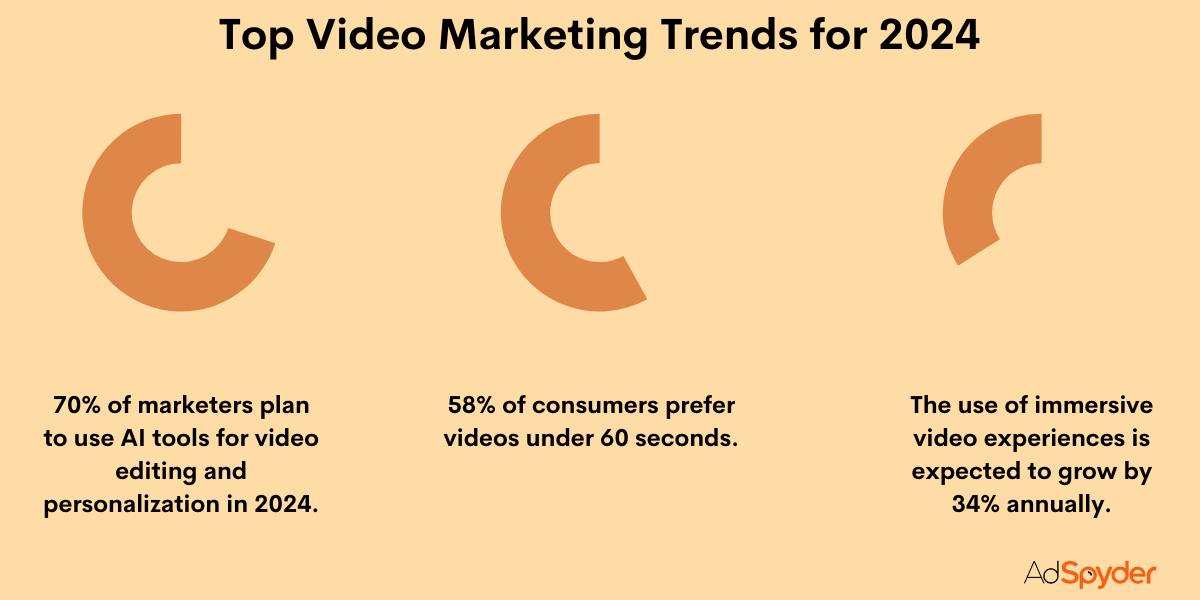Video has turned out to be one of the most prior mediums for capturing the attention of target audiences and delivering brand messaging. However, shooting and editing videos is not good enough to create successful video campaigns. The key to a good video marketing strategy is hence in its preparation and planning. These steps are vital in ensuring the final product looks appealing and corresponds to the goals of the campaign, which will be relevant to the target audience. This blog will delve into pre-production, the usage of storyboards, and give some tips on how to create an effective video marketing campaign
Ready to Elevate your Marketing Strategy?
Summary
This blog covers the following:
- The importance of the pre-production stage in video production.
- It mentions major activities at this stage of video production that include idea generation, script preparation, the creation of storyboards, planning logistics, budgeting, and selecting the production crew members.
- Create specific, efficient storyboards by using pre-designed templates, involving a design team, and determining what the right level of detail is without becoming too rigid.
- A step-by-step guide to FAQs about storyboarding and pre-production planning.
By the end of this blog, you will know how to plan and create a storyboard for your effective video marketing campaign so that the production process is as smooth as possible and the final product is as effective as possible.
The Pre-Production Process and Its Importance
Understanding the Pre-Production Process
Pre-production is the first stage of video production in which some preparation is made before actually shooting. It starts right from the development of the idea to the finalization of the production plan. Salient elements of pre-production include:
- Concept Development: In this regard, it involves generation of ideas, establishment of goals for the video, and setting priorities for audiences and messages.
- Scriptwriting: Writing an effective script to do what the effective video marketing campaign objective is about, and to engage the target audience.
- Storyboarding: A sketch of each scene, including format and shot sequence for the video.
- Logistics Planning: Book production time, find a location, cast actors, secure permits.
- Budgeting: Cost estimates at each stage of production and organization of resources accordingly.
- Production Team: The casting of actors and actresses, choosing other crew, which involves the director, the camera operator, and editor; definition of positions and functions.
Must see: VR and AR in video marketing
Benefits of Thorough Pre-Production Planning
Thorough pre-production planning offers several benefits
- Clarity and direction: A well-articulated plan therefore brings forth clarity of intent on the methodology through which the production process is to be carried out and about the goals of the project.
- Saves Time and Resources: Pre-production planning allows the project team to identify any problems and their potential solutions that might arise in the course of production in advance for smooth execution and hence avoid wasting time and money.
- Enhancing Creative Collaboration: It helps the creative team to work in cohesion and ensures that there is order with regard to brainstorming and decision making.
- Minimizing Potential Issues: Solutions to the possible logistical, technical, and creative problems arising in pre-production help avoid them at all costs when shooting and editing.
Steps in the Pre-Production Process
Concept Development
- Coming up with concepts and identifying the goal of the video.
- Determining the audience and the main points.
- Creating a creative brief that defines the goals of the project, its tone, and style.
Scriptwriting
- Developing a script that has a clear plot and supports the overall objectives of the effective video marketing campaign.
- Receiving feedback from writers, directors, and other stakeholders and incorporating the changes.
- To make sure that all dialogue, action, and scene descriptions are captured in the script.
Storyboarding
- Developing image sequences for each scene, called storyboards.
- Storyboarding the video, meaning creating a sequence of scenes and visuals that the video will have.
- Assisting the creative team in the revision and approval of the storyboard.
Planning Logistics
- Setting production schedules and important events.
- Owning locations, recruiting staff, and getting the right permits.
- Procuring equipment and other materials required for production from vendors and suppliers.
See it Here: Psychology in Video Marketing
Budgeting
- Estimating the various costs that will be encountered during the various stages of production, that is, pre-production, production, and post-production.
- Being in a position to curtail cost so as to operate within the available financial budget.
- Monitoring the expenditure and making the relevant changes in the budget to suit the needs at a given point in time for the project
Putting Together the Production Team
- Casting actors and actresses for the leading roles, as well as other characters in the movie, plus the crew, such as directors, cinematographers, editors, and others.
- Give responsibilities to the team members so they don’t conflict on creating the movie. Preproduction meetings in order to make sure everyone is on the same page with the project and the goals of the project.
Tips for Creating Detailed and Effective Storyboards

Importance of Storyboarding in Video Production
Storyboarding is the important preproduction processes in which each scene of the video is drawn in the form of sketching. It serves a number of important purposes:It serves several important purposes.
- Storyboarding is the process by which the written script is transformed into a visual and sequential representation of the scenes that are to be captured during the production process.
- Communicating the Director’s Vision to the Production Team: These are a visual guide for an entire production team-so they understand what the director wants and how to get it.
- Identifying Potential Problems and Solutions: By the creation of storyboards, potential technical or artistic problems can be envisioned ahead of time, at which point the team can solve them before shooting.
Features of a Good Storyboard
An effective storyboard includes several key elements:An effective storyboard includes several key elements:
Frames and Shots
- The process of analyzing the script and dividing it into scenes and shots.
- Employing frames to depict camera positions, movements, and significant visual aspects.
Annotations and Descriptions
- Recording the notes on the dialogue, action, and the transitions.
- This is also in regards to aspects such as lighting, sound, and other effects.
Visual Style and Composition
- Developing the visual aesthetic and mood of the video.
- Applying techniques in composition to support the narrative and control the flow of the audience’s gaze.
Tips for Creating Storyboards
Good storyboards take lots of preparation and consideration to get right. Here are some tips to get you started:Here are some tips to get you started:
Creating Storyboards from Templates and Applications
- Use storyboard templates in order to get your story well-organized. Storyboard templates help in the planning and development of a storyboard through their readily adaptable frameworks.
- Identify the digital tool and software that can be employed in developing professional storyboards. Some of the excellent tools for creating storyboards are Storyboard That, FrameForge, and Adobe Photoshop; these all have featured options to create detailed storyboards.
Working with the Creative Team
- Engage the stakeholders in developing the storyboard. It helps ensure that the storyboard reflects the intended project and that all the stakeholders are engaged in it.
- Request feedback and improvement revision in the storyboard. Revert to the storyboard with the creative team and make revisions based on the given feedback.
Balancing Detail and Flexibility
- Provide this information to the production team to enable them to carry out the production process. A detailed storyboard will help the production team understand what they are expected to do in each scene of the movie.
- Leave some space for improvisation on set. While everyone agrees on the importance of a storyboard, it is equally important for you to be prepared for changes so that you can implement any ideas that might arise on set.
Best Practices for Storyboarding
Starting with Thumbnails
- Make a rough draft, called thumbnail, to present the structure of the video and main actions. Thumbnails provide a rough visual representation that users can zoom in on for more specific frames.
- Turn thumbnails into detailed frames. Once the team maps out the overall structure, they should develop the thumbnails into detailed storyboards that contain all the visual and technical information.
Check out: The role of video in email marketing
Consistency and Clarity
- Ensure that the style and format used in the storyboard are uniform throughout. Coherence makes it easy to follow the storyboard and comprehend it.
- Make sure that every frame communicates the intended action and feelings of the subject. Describe the scene using simple and brief images, annotations, and explanations.
Reviewing and Revising
- Meet with the production team to review the storyboard often. Conduct a regular check to identify any problems or changes that you need to make.
- Revise to reflect the feedback and enhance the coherence of the paper. Revision of the storyboard according to the feedback is crucial to ensure that it portrays the intended project objectives and direction.
Integrating Video Marketing with Other Channels
This table provides actionable strategies to effectively integrate video marketing with other channels, ensuring a cohesive and impactful approach:
| Channel | Integration Strategy | Benefits |
|---|---|---|
| Email Marketing | Embed videos in emails or use video thumbnails to drive higher open rates and click-throughs. | Increases engagement, boosts conversion rates, and enhances the email’s appeal. |
| Social Media | Share videos across platforms (Facebook, Instagram, LinkedIn) tailored to each audience. Utilize platform-specific features like Instagram Reels or Facebook Stories. | Expands reach, encourages social sharing, and improves engagement through platform-native formats. |
| Paid Advertising | Use video ads on platforms like YouTube, Google, and social media to target specific audiences. Incorporate retargeting for users who viewed earlier videos. | Enhances ad performance by reaching targeted users with compelling content. |
| Website and Landing Pages | Place videos on landing pages, homepages, or product pages to explain services, demonstrate products, or share testimonials. | Improves user experience, increases dwell time, and can boost conversion rates. |
| SMS and Push Notifications | Include links to video content in text messages or app notifications for a more interactive experience. | Engages users on mobile devices, driving traffic to video content and increasing click-through rates. |
FAQs
Storyboarding is the creation of a rough sketch over the video to enable one in planning the overall structure and flow of the piece. This helps in planning the script, communicating the director’s vision to the cast and crew to identify potential problems well before filming.
A storyboard should contain the details that might help the production team with regard to camera shots, movements, lines, actions, illumination, and audio. It must also give room for flexibility during shooting because of creative differences.
You can use paper and pencil, storyboard templates, and digital tools. These include Storyboard That, FrameForge, Adobe Photoshop, and Canva.
Create the storyboard with all stakeholders involved. Accept ideas from your team for improvement and make changes to the storyboard accordingly. Make sure to convey the action and feelings in an understandable and clear manner using consistent visuals, annotations, and descriptions.
conceptualization, scripting, storyboard development, provision of logistics, budgeting, and the production team.
pre-production planning removes the confusion and ambiguity, thereby enabling the managers to predict some problems and make appropriate decisions.
ensure there is enough detail to make it useful in the production process without neglecting space for change during the shoots. This will let the storyboard guide the production team while allowing spontaneity or last-minute creativity.
Conclusion
Recap
Pre-production planning and storyboarding are two of the most important steps for producing effective videos. Thus, visualizing the script, making it clear, and anticipating possible problems will help to facilitate the production and improve the outcome. Successful storyboarding and planning involve teamwork, focus, and the ability to adapt.
Final Thoughts
Here are some insights and tips that you can apply when coming up with detailed and useful storyboards for your videos. Pre-production is the key to any good effective video marketing campaign, and the time and energy put into this stage of the process will be well worth it.
Call to Action
We invite you to begin using storyboards and detailed pre-production preparation for your video content. Please feel free to post your comments as to your experiences and ideas. Your feedback can help other members of the community to improve their video production techniques.




